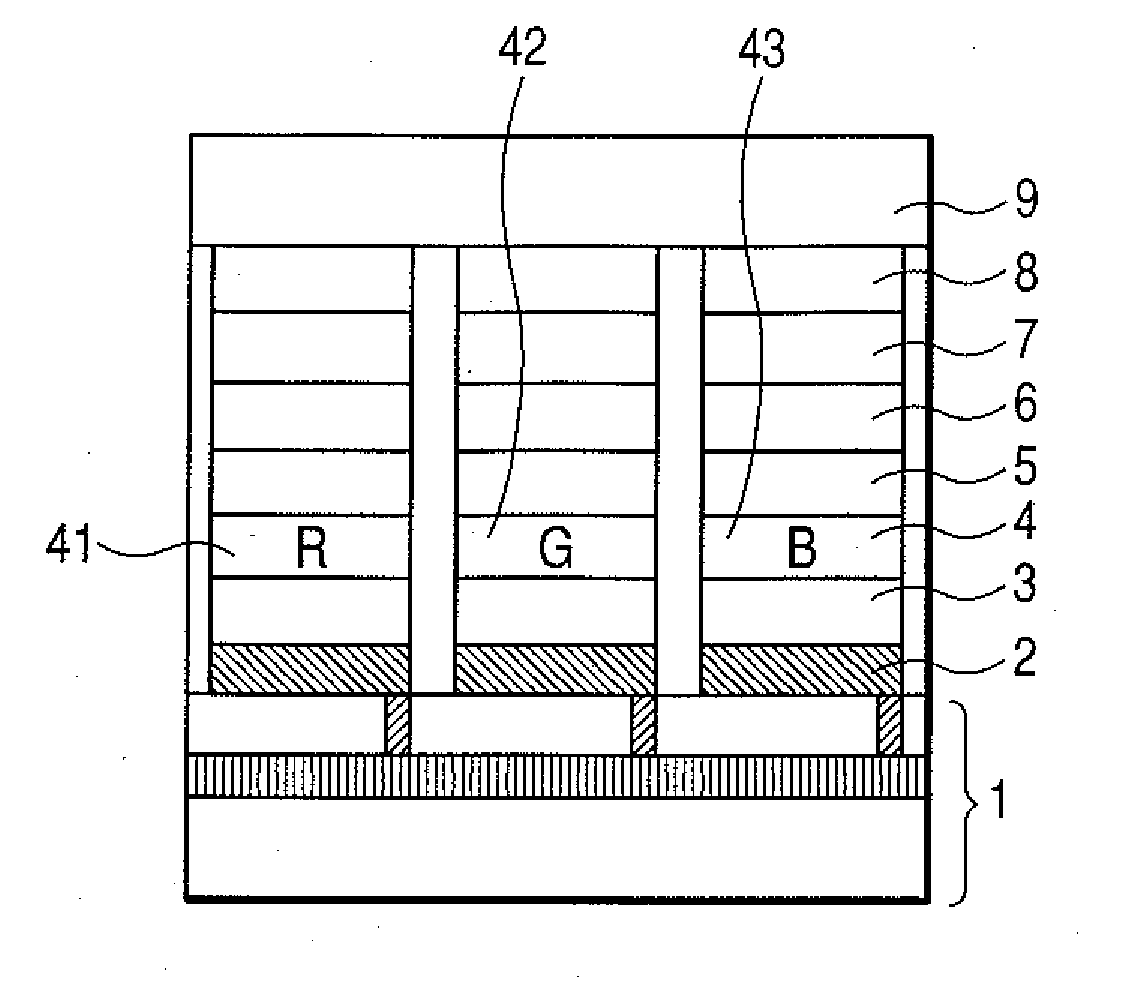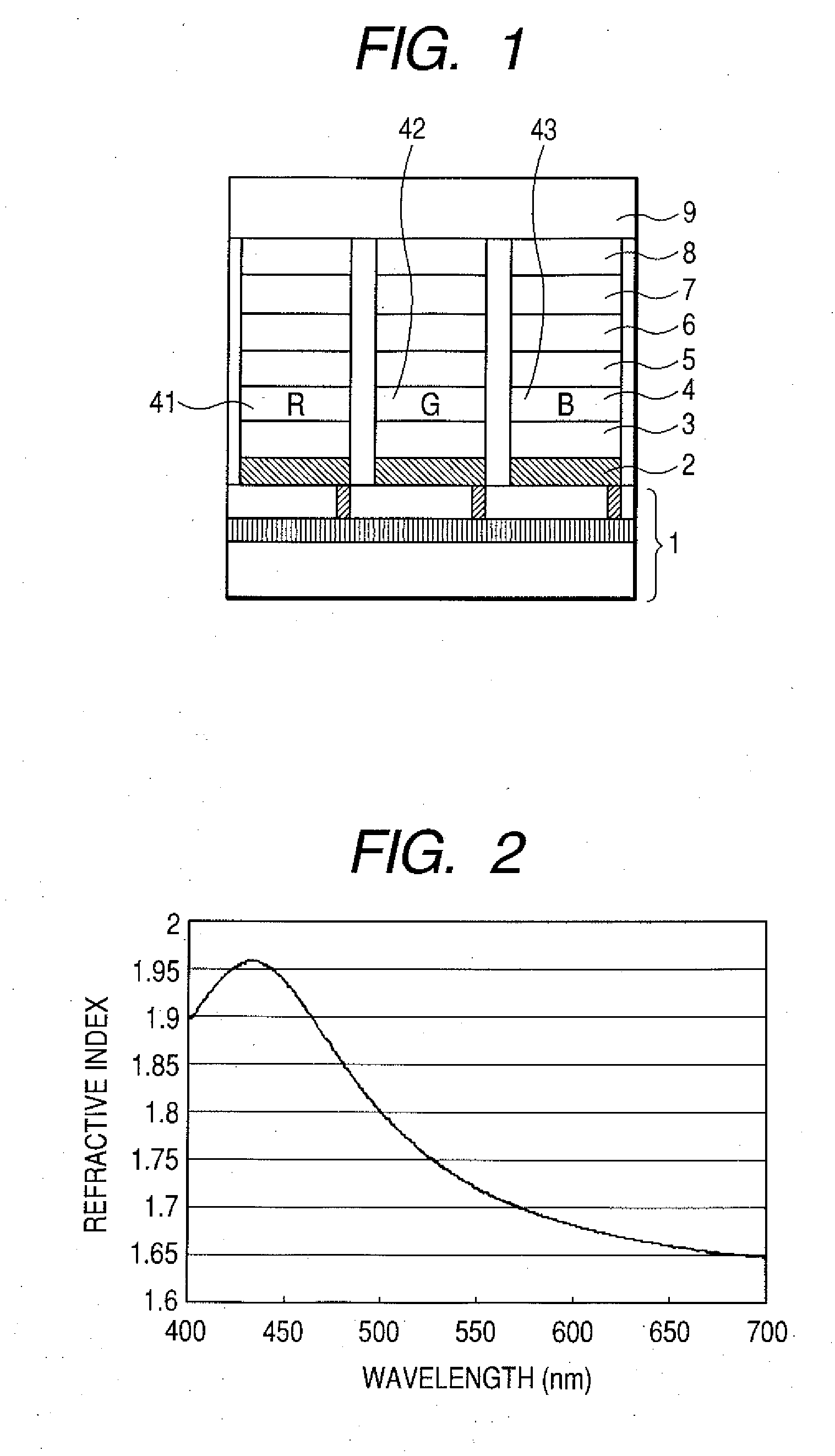Display device
a technology of display device and display screen, which is applied in the direction of discharge tube/lamp details, discharge tube luminescent screen, discharge tube/lamp details, etc., can solve the problems of reducing the life of the element, power consumption, contrast or deterioration of image quality, etc., and achieves good visibility and quiet ambient light.
- Summary
- Abstract
- Description
- Claims
- Application Information
AI Technical Summary
Benefits of technology
Problems solved by technology
Method used
Image
Examples
example 1
[0101] A display device of three colors R, G, and B having a structure shown in FIG. 12 was produced by the following method.
[0102] On a glass sheet as a support member 11 was formed a TFT drive circuit 12 composed of low-temperature polysilicon, and a flattening layer 13 composed of an acrylic resin was formed thereon to prepare a substrate 1.
[0103] A reflective layer 21 was formed thereon by sputtering an aluminum alloy (AlNiPd) in a thickness of about 100 nm, followed by patterning. Further, a transparent conductive film 22 was formed thereon by sputtering IZO in a thickness of 20 nm, followed by patterning, whereby the reflective electrode 20 was formed. Further, an element separation film 23 was formed of an acrylic resin, whereby the substrate having the reflective electrode 20 formed thereon was prepared. The thus prepared substrate was subjected to ultrasonic cleaning with isopropyl alcohol (IPA), and was then subjected to boil washing followed by drying. Further, the drie...
example 2
[0116] A display device was produced by following the same procedure as in Example 1 with the exception that the thickness of the organic compound layer and the thickness of the reflectance-adjusting layer were optimized for each emission color individually as shown in Table 3.
[0117]FIG. 14 shows the ambient light reflection characteristics of the display device thus obtained. In this example, the ambient light reflection characteristics vary for each light-emitting pixel because the film thickness is set for each emission color individually. In addition, Table 5 shows the results of the evaluation made in a manner similar to that of Example 1. Incidentally, the contrast value in this example is the average of the contrast values of the respective R, G, and B light-emitting pixels.
TABLE 3RedGreenBlueReflectance-adjusting layerSiO230 nm30 nm30 nmWC25 nm25 nm30 nmSiO295 nm180 nm 180 nm Cathode10 nm10 nm10 nmElectron injection layer30 nm10 nm10 nmElectron-transporting layer10 nm10 n...
PUM
 Login to View More
Login to View More Abstract
Description
Claims
Application Information
 Login to View More
Login to View More - R&D
- Intellectual Property
- Life Sciences
- Materials
- Tech Scout
- Unparalleled Data Quality
- Higher Quality Content
- 60% Fewer Hallucinations
Browse by: Latest US Patents, China's latest patents, Technical Efficacy Thesaurus, Application Domain, Technology Topic, Popular Technical Reports.
© 2025 PatSnap. All rights reserved.Legal|Privacy policy|Modern Slavery Act Transparency Statement|Sitemap|About US| Contact US: help@patsnap.com



